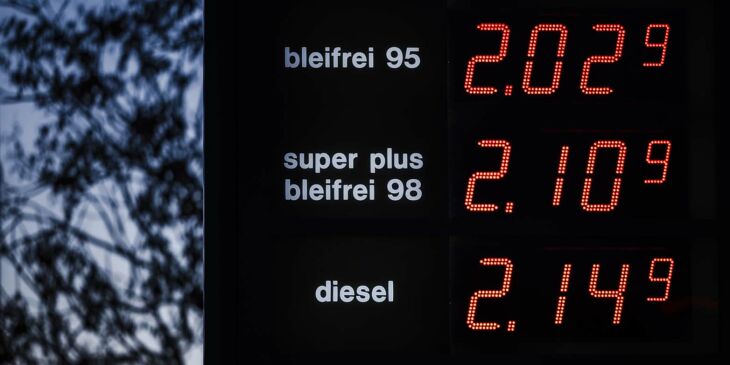Sturm and his colleagues also focus on the basket of goods used to measure inflation. This tracks price changes across a range of consumer goods and services. It turns out that much of the current inflation is down to increased prices for energy, raw materials, and goods that have been in high demand during the pandemic. “People have been prepared to spend more money on computers and TVs, but these are mainly one-off effects that we would expect to normalise over the medium term,” says Sturm.
In normal circumstances, this would indicate that the currently high rate of inflation is likely to be temporary. However, the invasion of Ukraine and the resulting sanctions imposed on Russia are also driving inflation. “Russia is one of the world’s largest suppliers of oil and gas, which means that energy prices have risen even further,” Sturm explains. Moreover, Russia and Ukraine are among the largest exporters of wheat. Following the outbreak of war, prices not only for wheat but also for other crops such as maize and soya have gone through the roof. Sturm says it is still difficult to tell just how quickly and heavily this will impact food prices. But one thing is clear: rising oil and gas prices will further fuel inflation.
A sign of uncertainty
So, where will inflation come to rest in the longer term? This will depend not only on price trends but also on inflation expectations. “When more and more people believe things are going to get more expensive, they start demanding higher wages, which in turn has an impact on prices,” Gersbach explains.
Inflation expectations are measured by canvassing analysts, companies and consumers about future price trends. KOF is among the bodies that publish such surveys. In addition, the expectations of financial market actors can be gauged on the basis of certain market transactions. According to Gersbach, the data is increasingly clear: “For a long time, the financial markets appeared to regard future inflation as relatively low and stable. But surveys have been showing a significant rise in average inflation expectations and a greater spread of opinion for quite some time now.” Moreover, in many European countries, the majority now expects inflation to continue rising – and the current conflict will only reinforce this trend.
Whether this pessimistic outlook further hardens will depend to a large extent, Gersbach and Sturm say, on the monetary policy of the central banks. In response to high inflation in the 1970s and 1980s, most central banks in industrialised countries have become relatively independent of government policy and now focus on maintaining price stability. “The lesson of past inflationary crises is that currency stability is better left in the hands of independent experts,” says Gersbach.
If higher inflation becomes entrenched and inflation expectations move higher, central banks will need to raise interest rates and cut back their generous bond-buying programmes and other interventions in the financial markets. Both economists agree that this would entail substantial risks, especially for the eurozone. “A premature rise in interest rates would threaten the fragile economic recovery,” says Sturm. “And countries with a high level of debt could run into difficulties refinancing those loans.” It could also lead to serious upheaval in the financial markets.
The war in Ukraine and the attendant economic fallout have further exacerbated the dilemma facing central banks. “The coming slowdown in economic growth could well persuade them not to raise interest rates as planned, which would further fuel inflation,” Sturm explains. In a worst-case scenario, there is even the threat of stagflation, an economic phenomenon not seen since the 1970s, which combines high inflation with falling growth and rising unemployment. The extent to which the economic picture further deteriorates and the level at which energy prices finally stabilise will depend on how the Ukraine conflict plays out.

















